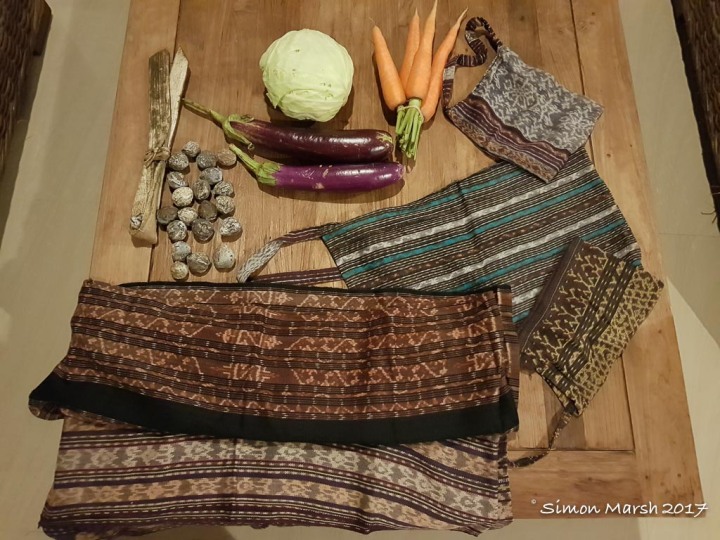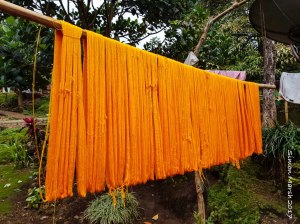Kelimutu is a dormant volcano in the southern highlands of Flores and just one of many peaks in the Ring of Fire. What makes it special are the tri-coloured crater lakes sharing the same caldera at a height of 1300m. Although Kelimutu is our destination the journey through the rain forest of Flores is very special.
We choose to fly into Ende because we are interested to visit a small house on the east of the town. This rather quaint and unprepossessing house was where the future President Sukarno of Indonesia was exiled for his nationalistic tendencies in 1935. There is not much in the house but a few of the black and white photos show a young man with a vision. Most Indonesians are unaware that he composed the Pancasila in this backwater and changed the course of their country.
As we leave the coast we head upwards, along a new road which winds through lush mountain passes. A river courses through the valley and waterfalls cascade from towering cliffs lined with tenacious trees clinging to the sheer rock. Bamboo grows up from the valley, thick and tall. The rustic homes we pass still have latticed bamboo walls with modern, and more practical, corrugated iron roofs. In fact bamboo is utilised everywhere and we stop to check out the bamboo bridge crossing the river just outside of Ende.
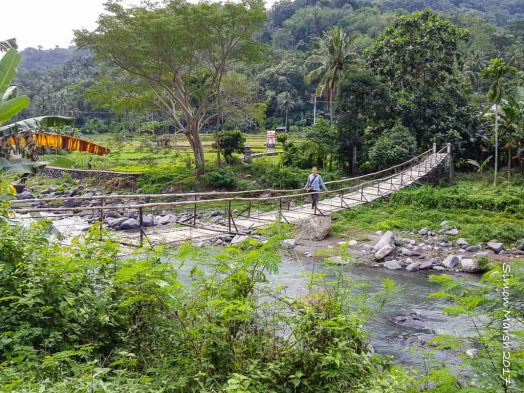 Agriculture thrives in the valleys. There are wild banana and papaya trees alongside the roads. Then there are the terraced rice paddies and clove, cocoa and coffee plantations fed by the irrigation systems using mountain water. There are vegetable gardens with a wealth of produce near every house. We turn a corner to see a local market spread along the side of the road selling some of the best produce we’ve ever seen. The carrots looked so good that we had to buy some! We also bought oranges, aubergine and cabbage…its good to share some money around!
Agriculture thrives in the valleys. There are wild banana and papaya trees alongside the roads. Then there are the terraced rice paddies and clove, cocoa and coffee plantations fed by the irrigation systems using mountain water. There are vegetable gardens with a wealth of produce near every house. We turn a corner to see a local market spread along the side of the road selling some of the best produce we’ve ever seen. The carrots looked so good that we had to buy some! We also bought oranges, aubergine and cabbage…its good to share some money around!
We pull off the main road into a village where the ladies weave ikat. Every stage of the process is there for us to see. The indigo for the black dye comes from a plant source which thrives in the rain forest. The orange which compliments it is not available locally and they need to buy it in from outside. One loom shows how they design the motif, masking the orange threads before dipping in indigo. Others are more advanced with some of the weaving complete. Some of these ikat take months of diligent work to complete and provide a much needed source of income to the village. Of course we had to buy some to add to our collection!
As we drive higher we pass through the cloud base and are enveloped by swirling tendrils of mist. Darkness is falling, adding to the surreal atmosphere, but finally we drive out the other side and into another world.
The village of Moni is perched on the side of Kelimutu and this is our last stop for the day. We stop for dinner at a local ‘reggae bar’ where we try the local specialities of Moni cakes and arak, a local spirit distilled from palm fruit and sweetened with local honey.
We are staying at the EcoLodge which, as you would expect, is environmentally oriented. It is part of a group of lodges found in some of the more popular parks in Indonesia which use solar power for their lights, recycle waste water, recycle their organic waste to feed the pigs and support the local community with employment. The lodge is not luxurious but it is certainly comfortable. It is set in a beautiful rainforest garden and the rooms are based on a traditional design which we found out more about the following day when we visited a traditional Lio village.
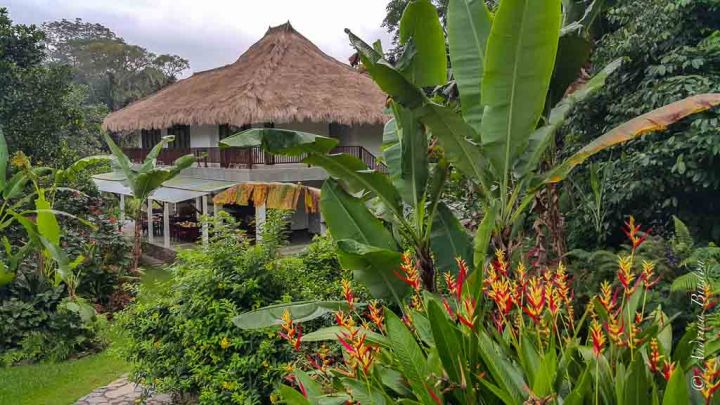 The town goes to sleep early because we all need to rise for the trip to the crater the following day, by 9pm the only sound is the crickets outside the windows.
The town goes to sleep early because we all need to rise for the trip to the crater the following day, by 9pm the only sound is the crickets outside the windows.
We get up at 3.45 the next morning and drive most of the way up the side of the volcano as we slowly wake up. There is a short trek on a paved path which takes us up to the peak and although it is still dark it is not difficult. We can see the shadows of the lakes in the darkness as we move up to the viewpoint and wait for the sun to rise. It seems the volcano spirits are pleased with us as we are treated to a spectacular sunrise with the clouds flaming in the sky.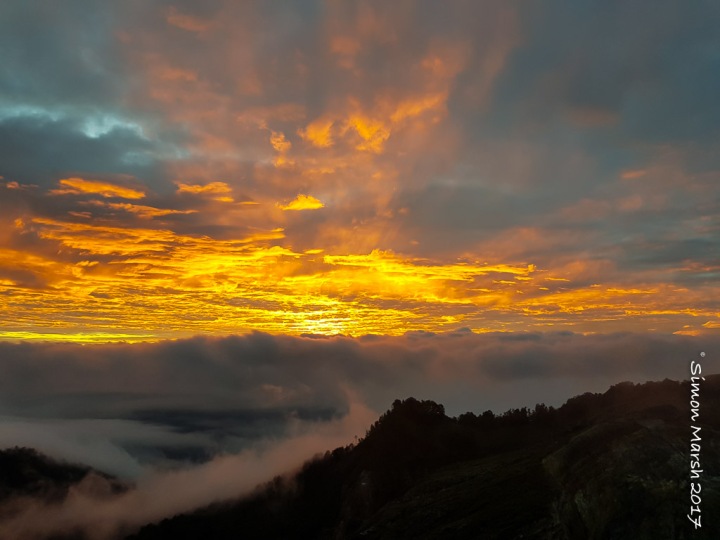
This view from the top of the world is truly magnificent! As the sky brightens we can see the turquoise colour of Nuwamuri Ko’o fai lake below us. Kelimutu means ‘Boiling Lake’ and the water looks alive with iridescent patches blooming from the bottom and spreading on the surface. You can see the minerals at work and you realise why those that have been known to fall in the lakes have not come out alive.
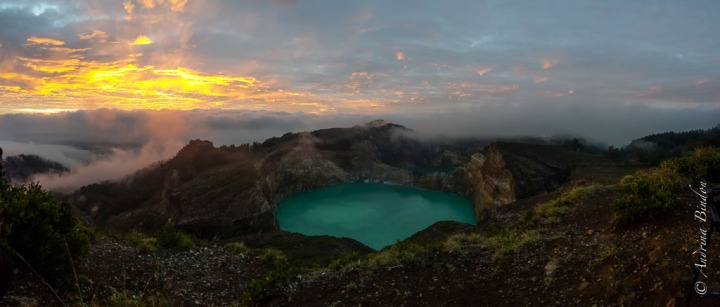
As the sun rises we notice the second lake, right behind the first, sharing a razor-thin crater wall. This one is called Atapolo and is a similar turquoise colour to the first although this has not always been the case. One of the wonders of these lakes is the evolution of colours on record. When they were ‘discovered’ by Dutch geologists in 1914 they were red, blue and white. In more recent times they were: black, turquoise and brown in 2009; various shades of green in 2010; black-brown, green, and the last one was in the process of changing from green to red in 2013.
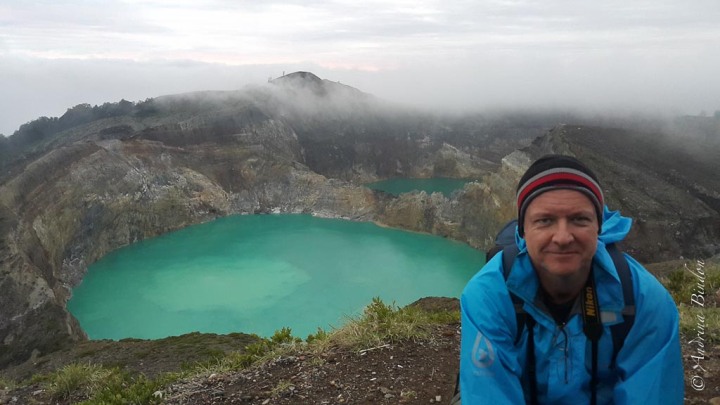
The local Lio hill tribes revere the mountain of Kelimutu and the crater lakes. Although most of the people are officially Catholic their animist traditions mix uncomfortably. They believe that the lakes are the spiritual resting place of their ancestors. Tiwu (‘lake’) Nuwamuri Ko’o fai is the ‘lake of the young men and maidens’, so those that died young. Tiwu Atapolo is the ‘bewitched lake’ so is for the spirits of bad people and Tiwu Atambupu is the ‘lake of the old people’. The Lio people believe that the colour changes of the lakes are a result of neglected ancestral souls. Geologists believe the cause is the oxidation-reduction status dependent on the balance of volcanic gas input and rainfall rate which is mediated by the groundwater system in the volcano itself. Today the third lake is brown.
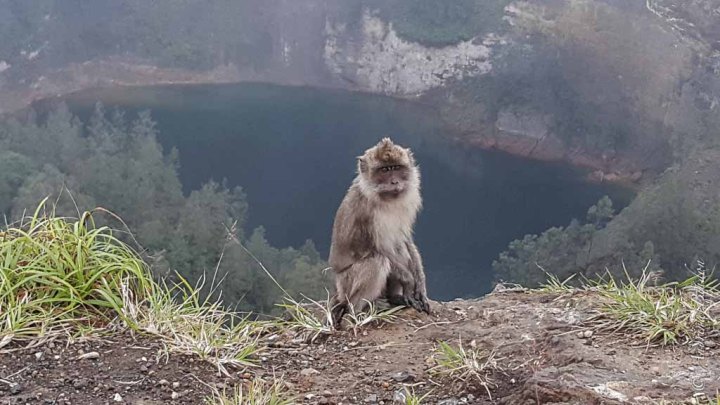
We visited the traditional village of Saga and met the head shaman who incongruously is called Pak Maxi! He showed us around the village and emphasised the importance of the lakes to his ancestors and explained that the traditional tall roofs are so that there is space for their gods above them and the bad people are filtered out as they ascend in to the roof space. There is also space under the houses where the corporeal remains of the ancestors are buried.
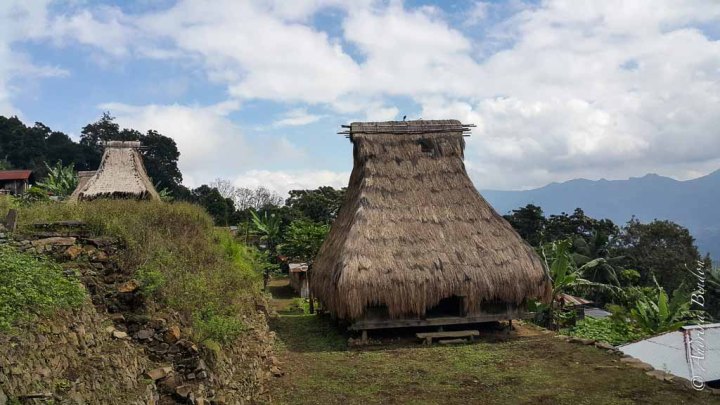
Later he invited us back to his house to enjoy coffee from his own plantation on the mountainside and to show us videos on his laptop whilst elaborating on many of the animistic rituals.
In Saga Village each important stage of the farming process is preceded by a ceremony and the ritualistic sacrifice of a small animal, usually a chicken. More important ceremonies such as funerals are marked by the sacrifice of a pig and his father’s funeral three years before (he was head of the village) led to the demise of seven pigs on consecutive days. Of course all of this is interspersed with prayers to a Christian god.
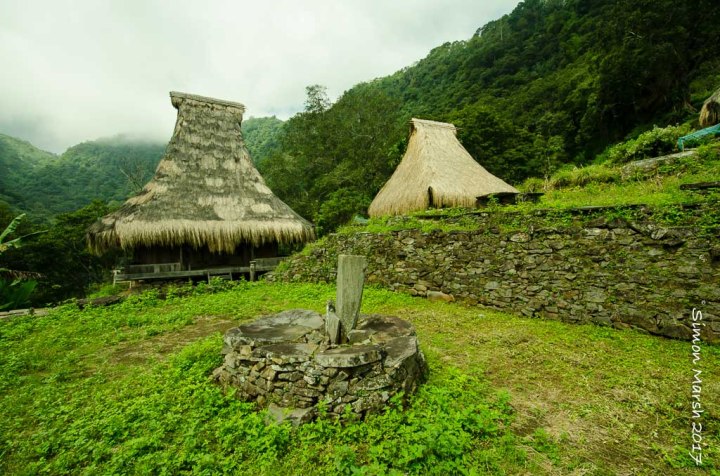 The time spent with Maxi in his Saga Village was for us a highlight of the whole trip, he is passionate about his people’s life and beliefs adding a whole new dimension to the trip. The day became a spiritual as well as panoramic experience and this was by far the side of the trip we reflected most on as we made our way back to Bali later that afternoon. As a leaving present he gave us some local Macadamia nuts to enjoy later at home and we added this to our bag of souvenirs and memories which we will continue to enjoy along with our photos.
The time spent with Maxi in his Saga Village was for us a highlight of the whole trip, he is passionate about his people’s life and beliefs adding a whole new dimension to the trip. The day became a spiritual as well as panoramic experience and this was by far the side of the trip we reflected most on as we made our way back to Bali later that afternoon. As a leaving present he gave us some local Macadamia nuts to enjoy later at home and we added this to our bag of souvenirs and memories which we will continue to enjoy along with our photos.